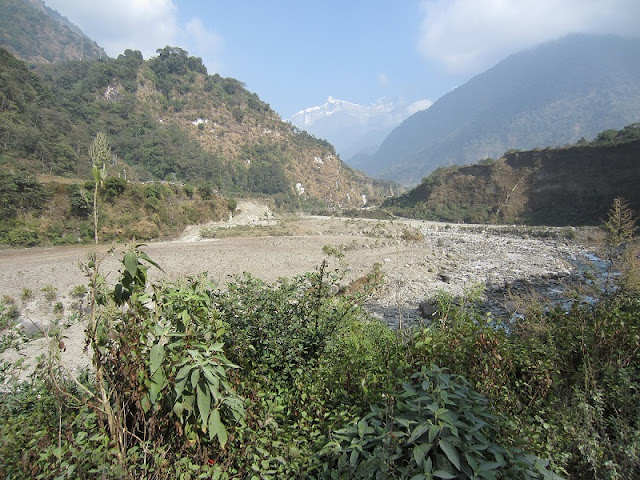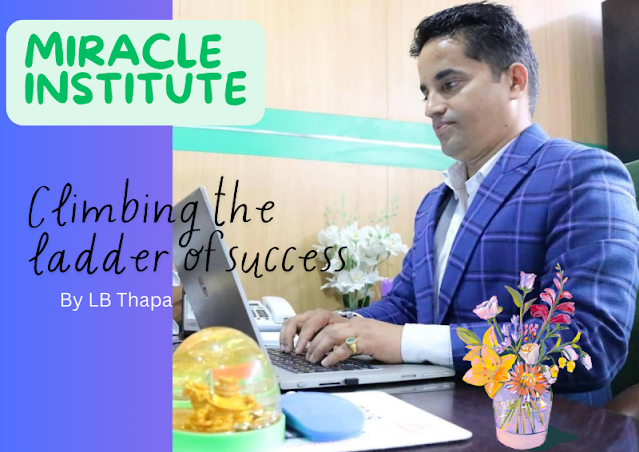THE LONE SURVIVOR OF KHARPANI FLASH FLOOD DISASTER
 |
| The Seti flash flood disaster was unseen and highly unexpected that killed several people in a matter of no time. Photo: The Kathmandu Post |
I was the only person who survived. I saw the flash flood which swept away many people and their houses in a matter of few seconds: Gyanu Gurung, a survivor of the Seti flash flood, at Kharpani
After 10 years of the Seti flash flood disaster
By LB THAPA
Saturday 5 May 2012 was an ordinary day like many other days. It was my day off so I was busy writing an article for The Rising Nepal, a national daily. Meanwhile, at about 11 o’clock in the morning, a police van began moving around the Seti River and asked the people, who were busy collecting sand from the Riverbank, to go away from the riverside immediately.
I stopped a police van and asked them why we should not go near the river. Upon this, they told me that a massive flash flood was on its way to hit the Seit gorge soon. And they were right. A massive flash flood had been formed due to a landslide in the icy mountains which had caused the flash flood. Thanks to an Avia club pilot who spotted a brown cloud above the mountains and immediately informed the concerned authority in Pokhara. Had he not informed immediately about the impending danger, many people would have lost their lives for sure.
 |
| At the site of the Seti Riverbank, a park with a monument is built in the memory of the people who had lost their lives in the disaster. Photo: LB Thapa |
 |
| The Seti flash flood had ravaged a similar type of suspension bridge over the Seti River. This is the new one. Photo: LB Thapa |
 |
| This is the place where the maximum number of people died from the Seti flash flood. Here used to be a small bazaar. On the very day of the disaster, there were at least three picnic parties were going on. Photo: LB Thapa |
Recently, a decade after the disaster, I visited the place with the intention to meet the people who had witnessed the disaster.
The place is about 20km away from Pokhara. I decided to go to the place on my mountain bike. It was scorching sunlight and I was paddling slowly.
It took nearly two hours to reach Kharpani. In fact, it was my third visit to Kharpani. When I had been to this place for the first time, this was a bustling bazaar. There was almost everything available that a local bazaar should have. The local bazaar was always packed with people from nearby villages. Local villagers would regularly throng the bazaar to sell and buy goods for their daily requirements.
Until a few years ago Kharpani was unknown to the outsiders, but after the discovery of hot spring ponds, the place drew many people’s attention. Soon people began talking about the medicinal properties of hot spring water of Kharpani. Foreigners and domestic visitors began regularly visiting to take a plunge into these hot ponds. I did personally meet many people who told me that they had been cured of their skin and other diseases after taking a dip into those hot water ponds.
The second time I visited this place, on the second day of the disaster, there was nothing---everything thing was gone. The place had already been turned into a ghost town. There was nothing that stood above the ground. The force of the gushing water had destroyed, uprooted, and flattened everything.
KHARPANI TODAY
 |
| Gyanu Gurung was the sole survivor. She saw how quickly people disappeared into the gushing water of the Seti River. Photo: LB Thapa |
 |
| Gum Bahadur Gurung did not go to the bazaar on the fateful day of the disaster. Otherwise, he would always go to sell local products at the bazaar. Photo: LB Thapa |
It took about two hours on my mountain bike to reach Kharpani. After having reached there, I could not believe my eyes what I saw there. The entire area of Kharpani, which had once been occupied by the bustling bazaar, was completely wiped away and left no traces behind. A thick layer of sand had spread around the area of Kharpani.
The local administration has made a park in the memory of those people who had lost their lives in the flood.
I walked across the suspension bridge to reach the other side of the bridge and there I met a woman named Gyanu Gurung. She was the sole survivor of the disastrous Seti flash flood. Speaking with this scribe, she said “I was right in the middle of the bazaar where my job was to collect an entry fee from the people who wanted to take a bath in the hot spring. I had completed my morning shift and wanted to go to my house for lunch.
“Some of my friends in the group insisted on having lunch with them at a restaurant but I refused. I was walking towards the bridge in the meantime we heard a roaring sound. We looked around but could not see anything. Some people beside me said that the sound must be coming out of a helicopter. They began looking at the sky above their heads. However, I continued walking toward the bridge. I had barely walked halfway down the suspension bridge when I saw a gigantic size of wave which was swirling toward us.
 |
| Photo: LB Thapa |
 |
| On the way to Kharpani. Photo: LB Thapa |
 |
| Photo: LB Thapa |
 |
| On the way to Kharpani. Photo: LB Thapa |
For a moment, I was at a loss as to what to do. Whether I should return or run fast and reach the other side of the bridge. I saw all the people who were walking with me along the suspension bridge begin running back. For a moment I did also think to follow them, but I changed my mind and ran fast to reach the other side of the bridge.
Thank god I had taken the right decision at the right moment. Had I decided to return back, today I would not be here speaking with you. I think God wanted me to live for my family. However, I vastly disagree with the government data on people who had lost their lives in the flood. According to them, only 31 people had died in the accident but it is squarely untrue. There was a crowd of people in the main bazaar area who were mostly outsiders. All of them were swept away or buried alive under the sand. Those among dead could never be known”.
Gum Bahadur Gurung is a local resident of Mersa village of Machhapuchhre village development committee. “Usually I would regularly come to Kharpani to sell local produce. I would always sit in the middle of the bazaar and sell local goods, but on the very day of the disaster, I felt nausea and decided not to go to Kharpani. I am sure if I had been to Kharpani on that fateful day my name would be on the list of the dead”.
 |
| Lovely village kids of Ghachowk. Photo: LB Thapa |
 |
| Photo: LB Thapa |
 |
| Photo: LB Thapa |
 |
| There are two small, hot water ponds. It is believed that having a bath in these ponds can cure skin-related diseases. Photo: LB Thapa |
 |
| The mountain bike that I rode from Pokhara to Kharpani to write this story for you. Photo: LB Thapa |
After the disaster satellite images have made it clear that a big rock had obstructed the path of the river over the mountains. An artificial dam was created that stored tons of water before it broke loose. The gushing water swept away everything that came in its way. The flash flood spread rapidly at Kharpani and destroyed several houses, restaurants, and hotels in a matter of a few seconds.
It has been one decade since the disaster but still, people are so scared that there is no bustling bazaar in the ruined area. The new suspension bridge has been made but not the bazaar. No one wants to spend a night at the bank of Seti River.
 |
| Photo: LB Thapa |
 |
| The shepherd with his dogs. Photo: LB Thapa |
 |
| The Shephard. Photo: LB Thapa |
 |
| Photo: LB Thapa |
While returning from Kharapani, on the way I met Tanka Gaire who was feeding his mountain dogs. Tanka Gaire and his friend take care of about 600 goats and sheep in the dense forest of Dhirpan.
“It is entirely impossible to take care of over 600 goats and sheep by two of us. Our job has been made a lot much easier by our mountain dogs, three of them. They are very skilled at doing their part of the job. These mountain dogs have amazing talent. They will never let a single goat or sheep go astray. Had these dogs were not employed, it would be almost impossible for us to take care of such a large number of goats and sheep,” said Tanka Gaire.
When asked why he did not use the normal breed of dogs to take care of his goats and sheep. He said, “We tried to train normal dogs in the past but those dogs could not learn the skill we wanted. However, mountain dogs are highly intelligent and they are meant to perform this type of task”.
 |
| LB Thapa is a Pokhara-based freelance writer and author. Photo: read2bhappy.blogspot.com |
LEGAL
WARNING
All rights reserved. No articles and photos published in this blog can be reproduced without the prior written permission of the author. Legal action will be taken immediately if any articles or photos are reproduced without the author’s knowledge. However, articles or photos can only be reproduced by duly mentioning the author’s name and the blog's name (read2bhappy.blogspot.com). The author must be informed by sending an email. All articles and the photos published in this blog are the copyright property of LB THAPA.










.png)
Very important information.
ReplyDeleteRubika Bastola
Pokhara
This was a terrible experience for the people of Pokhara.
ReplyDeleteHari Sharma
Pokhara
I am a regular reader of this blog. I always wait to read a new article on this blog.
ReplyDeleteBinita Ale
Kathmandu
Nature is always powerful and we are helpless.
ReplyDeleteDipak Raj Kadel
Biratnagar